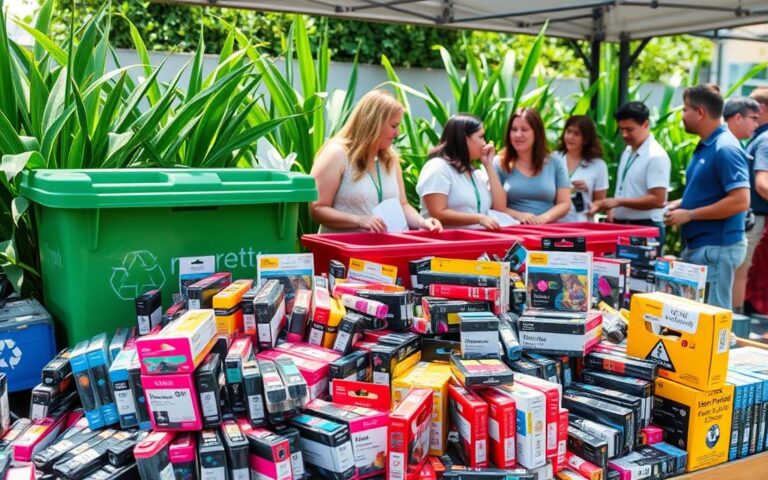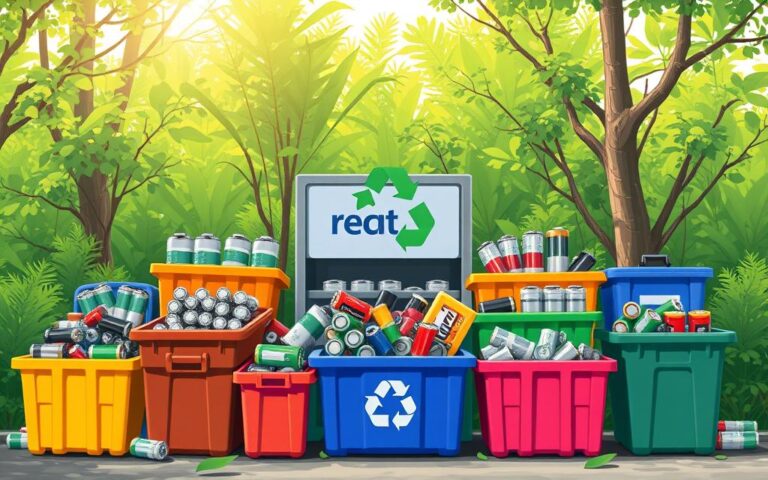Steps for Secure and Sustainable Device Recycling
Recycling electronic devices is a responsible way to reduce environmental impact and protect sensitive information. As technology advances, businesses and individuals replace laptops, smartphones, and tablets more frequently. However, device recycling involves more than simply handing over old equipment. A careful, structured approach ensures that devices are cleared of confidential data while supporting broader sustainability goals, and here’s why:
Preparing Devices for Recycling
Before sending devices for recycling, it’s essential to prepare them properly. This preparation protects both personal and business data and ensures that recycling efforts are effective. Start by creating a full inventory of all devices scheduled for recycling. Include active and retired devices that may still contain valuable data.
Back up important files to a secure location, such as an encrypted cloud storage service or an external hard drive. This ensures that no critical information is lost during the recycling process. Once all necessary data has been safely stored, you can proceed with removing personal accounts and resetting devices to factory settings.
Factory resetting alone may not permanently erase all data. For devices used in business settings, using certified data wiping tools or consulting a professional IT service ensures that information is unrecoverable. Taking these precautions minimises the risk of data breaches after disposal. It is worth building device preparation into your broader asset management processes, making it a routine part of IT operations rather than a last-minute task.
Organising and Managing Files Before Recycling
Managing files effectively before recycling a device can streamline the transition to new equipment. Organising documents into clearly labelled folders improves accessibility and makes the handover of responsibilities smoother. It’s advisable to review files and delete duplicates or obsolete versions to reduce digital clutter.
During this stage, if you have multiple fragmented files across different folders, it can be helpful to combine your PDFs into a single file. This method simplifies document management and makes it easier to maintain comprehensive project records or client archives without relying on outdated devices.
Organising files also provides an opportunity to review document retention policies. Some files, especially those containing sensitive or legal information, must be retained for specified periods. Identifying these documents early ensures compliance with relevant regulations while promoting responsible data management practices. Clear labelling and organised storage of retained files also make future audits or information requests less stressful and time-consuming.
Secure Data Erasure Practices
Effective device recycling depends on secure data erasure. Deleting files manually or performing simple resets is insufficient for ensuring complete data removal. Instead, use specialised wiping software that adheres to recognised data destruction standards.
For devices containing highly sensitive information, consider physical destruction methods, such as shredding hard drives or using certified degaussing equipment. These approaches guarantee that even advanced recovery techniques cannot retrieve residual data.
After data erasure, create a verification process where a second person confirms that files have been successfully removed. This final check adds an extra layer of accountability and ensures that no device is recycled with recoverable information still intact. Documenting the erasure process further strengthens your compliance efforts and provides useful records for audits or regulatory reviews.
Choosing Responsible Recycling Partners
Selecting the right recycling partner is vital for ensuring ethical and environmentally sound disposal of devices. Look for certified e-waste recyclers who adhere to recognised industry standards and comply with local environmental regulations.
Responsible recyclers provide certificates of data destruction and clear documentation outlining their recycling methods. They should also maintain transparent practices regarding where and how materials are processed after collection. Working with reputable partners reduces the risk of devices ending up in landfills or contributing to unsafe recycling practices abroad.
When dealing with business devices, choosing a recycling partner with experience in corporate IT disposal adds an extra layer of assurance. These providers often offer chain-of-custody tracking, which further protects sensitive information throughout the recycling process. Establishing long-term relationships with trusted recycling partners ensures consistent, reliable service for future device refresh cycles.
Environmental Considerations in Device Recycling
Beyond data protection, device recycling plays a critical role in environmental sustainability. Electronic devices contain valuable materials, such as gold, silver, and rare earth elements, which can be reclaimed and reused. Proper recycling reduces the demand for new resource extraction and lessens the overall carbon footprint associated with manufacturing new electronics.
Reducing e-waste also minimises the release of hazardous substances like lead, mercury, and cadmium into the environment. These toxins can contaminate soil and water supplies if electronic devices are improperly disposed of. By recycling devices correctly, individuals and businesses contribute to a cleaner, safer planet.
To further enhance environmental impact, consider donating still-functional devices to charitable organisations or refurbishment programs. Extending the life of equipment supports digital inclusion efforts and delays the need for new production. Establishing internal programs to encourage the reuse of technology within the organisation can also maximise resource efficiency.
Establishing a Device Recycling Policy
Creating a formal device recycling policy benefits both businesses and individuals. A structured approach ensures consistency and helps manage the lifecycle of electronic assets more efficiently.
A good policy outlines the procedures for preparing, wiping, documenting, and recycling devices. It should specify responsibilities, timelines, and approved recycling partners. Incorporating device recycling into broader sustainability or corporate social responsibility initiatives demonstrates a commitment to ethical practices.
Training employees or family members on recycling procedures ensures everyone understands their role in safeguarding data and protecting the environment. Regular reviews of the policy keep practices aligned with technological advancements and evolving regulations. Maintaining flexibility within the policy allows it to adapt as new best practices emerge in the areas of data security and environmental responsibility.
In Short
Secure and sustainable device recycling is an essential responsibility in a technology-driven world. By taking deliberate steps to prepare devices, manage data securely, and choose responsible recycling partners, businesses and individuals can protect sensitive information while contributing to environmental conservation. A structured approach not only safeguards digital assets but also promotes a more sustainable future for all. Responsible device management today paves the way for smarter, greener technology use tomorrow.















